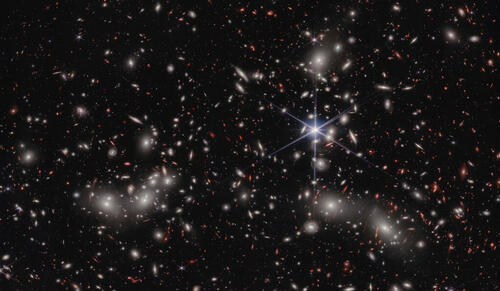
An international research team that includes Yale scientists has released a stunning new image of the region of space known as Pandora’s Cluster.
Say cheese, Pandora.
An international team of astronomers, including researchers from Yale, has unveiled the latest deep field image from NASA’s James Webb Space Telescope (JWST): an unprecedented look at the region of space known as Pandora’s Cluster, with never-before-seen details of three galaxy clusters coming together to form a megacluster.
Pandora’s Cluster, named for the Greek myth, is located four billion light years from Earth. Astronomers often target it in observational surveys because of its ability to magnify much more distant galaxies behind it — a phenomenon called gravitational lensing. It allows researchers to peer at features from the early universe that would otherwise be impossible to observe.
Previous images from the Hubble Space Telescope looked only at the Pandora Cluster’s central core. The new image stitches together four JWST snapshots into one panoramic image that displays roughly 50,000 sources of near-infrared light.
“The image had a profound impact on me, both in terms of its beauty and its scientific potential,” said Pieter van Dokkum, the Sol Goldman Family Professor of Astronomy and professor of physics in Yale’s Faculty of Arts and Sciences.
“Along with the rest of the world, I had already seen what JWST could do, and I figured the new image would look similar to the first data unveiled back in July,” van Dokkum said. “However, the wider area and the much greater depth of the new image turned out to be yet another leap forward.”
Van Dokkum is a team member and advisory committee member for the Ultradeep NIRSpec and NIRCam ObserVations before the Epoch of Reionization (UNCOVER) program, which worked with Webb instruments to produce the new image. Marla Geha, a professor of astronomy and physics at Yale, also is part of the UNCOVER program.
This article is excerpted from the Yale News article of February 15, 2023 by Jim Shelton. Please see below for the full article and other related links.